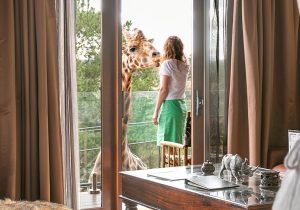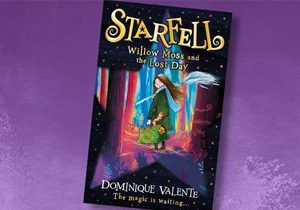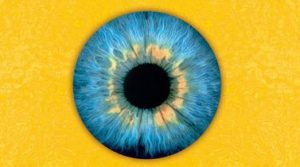
Dolphin Communication Primary Resource
Discover the secret life of the world’s underwater acrobats…
This primary resource helps pupils to learn about dolphins, focussing on the different ways that these fascinating mammals communicate. What noises do dolphins make? How do dolphins ‘talk’ to each other? How are scientists able to identify individual dolphins and study their communication?
Pupils will discover fascinating facts about dolphins in this animal primary resource, and learn about how they communicate in complex ways — from calls and whistles, to bubbles and body movements. They will also discover how these aquatic animals use sound to locate food through echolocation.
The teaching resource can be used in study group tasks for discussion about dolphins, as well as communication techniques in the animal kingdom. It could be used as a printed handout for each pupil to review and annotate, or for display on the interactive whiteboard for class discussion.
Activity: Get the children to use our primary resource to create an annotated dolphin poster, explaining how dolphins use their different body parts to communicate – e.g. fins to say ‘hello‘, tails to say ‘back off‘, mouths to make vocal calls, blow holes to make bubbles. They could also use the ‘Dolphin Language Decoded‘ section of the primary resource sheet to create a game/puzzle about how dolphins communicate through movement. The pupils could cut out the boxes, then see if they can put them back in order – matching each dolphin action with it’s corresponding meaning.
N.B. The following information for mapping the resource documents to the school curriculum is specifically tailored to the English National Curriculum and Scottish Curriculum for Excellence. We are currently working to bring specifically tailored curriculum resource links for our other territories; including South Africa, Australia and New Zealand. If you have any queries about our upcoming curriculum resource links, please email: schools@ngkids.co.uk
This Animals primary resource assists with teaching the following Key Stage 1 Science (Year 1) objectives from the National Curriculum:
Pupils should be taught to:
- identify and name a variety of common animals including fish, amphibians, reptiles, birds and mammals
- identify and name a variety of common animals that are carnivores, herbivores and omnivores
- describe and compare the structure of a variety of common animals (fish, amphibians, reptiles, birds and mammals, including pets)
Pupils might work scientifically by: using their observations to compare and contrast animals at first hand or through videos and photographs, describing how they identify and group them; grouping animals according to what they eat; and using their senses to compare different textures, sounds and smells.
National Curriculum Key Stage 1 Science (Year 2) objective:
Pupils should be taught to:
- identify that most living things live in habitats to which they are suited and describe how different habitats provide for the basic needs of different kinds of animals and plants, and how they depend on each other
- describe how animals obtain their food from plants and other animals, using the idea of a simple food chain, and identify and name different sources of food.
Pupils should be introduced to the idea that all living things have certain characteristics that are essential for keeping them alive and healthy. They should raise and answer questions that help them to become familiar with the life processes that are common to all living things. Pupils should be introduced to the terms ‘habitat’ (a natural environment or home of a variety of plants and animals) and ‘micro-habitat’ (a very small habitat, for example for woodlice under stones, logs or leaf litter).
Pupils should compare animals in familiar habitats with animals found in less familiar habitats, for example, on the seashore, in woodland, in the ocean, in the rainforest.
Pupils should be taught to:
- identify and name a variety of plants and animals in their habitats, including micro- habitats
- find out about and describe the basic needs of animals, including humans, for survival (water, food and air)
Pupils should be introduced to the basic needs of animals for survival, as well as the importance of exercise and nutrition for humans.
National Curriculum Lower Key Stage 2 Science (Year 3) objective:
Pupils should be taught to:
- identify that animals, including humans, need the right types and amount of nutrition, and that they cannot make their own food; they get nutrition from what they eat
- Compare and contrast the diets of different animals (including their pets) and decide ways of grouping them according to what they eat. They might research different food groups and how they keep us healthy and design meals based on what they find out.
National Curriculum Lower Key Stage 2 Science (Year 4) objective:
Pupils should be taught to:
- recognise that living things can be grouped in a variety of ways
- explore and use classification keys to help group, identify and name a variety of living things in their local and wider environment
- construct and interpret a variety of food chains, identifying producers, predators and prey
This Science primary resource assists with teaching the following Sciences Early level objectives from the Scottish Curriculum for Excellence:
- I have observed living things in the environment over time and am becoming aware of how they depend on each other
This Animals primary resource assists with teaching the following Sciences First level objectives from the Scottish Curriculum for Excellence:
- I can explore examples of food chains and show an appreciation of how animals and plants depend on each other for food.
Scottish Curriculum for Excellence Second level Sciences objectives:
- I can identify and classify examples of living things, past and present, to help me appreciate their diversity. I can relate physical and behavioural characteristics to their survival or extinction.
- I can use my knowledge of the interactions and energy flow between plants and animals in ecosystems, food chains and webs.
Scottish Curriculum for Excellence Third level Sciences objectives:
- I can sample and identify living things from different habitats to compare their biodiversity and can suggest reasons for their distribution.
Scottish Curriculum for Excellence Fourth level Sciences objectives:
- I understand how animal and plant species depend on each other and how living things are adapted for survival.
Download primary resource
More Like

Jamala Wildlife Lodge

Waiting for the Storks

Starfell












LEAVE A COMMENT
THANK YOU
Your comment will be checked and approved shortly.
WELL DONE,
YOUR COMMENT
HAS BEEN ADDED!
COMMENTS
Helped me a lot
CUSTOMIZE YOUR AVATAR